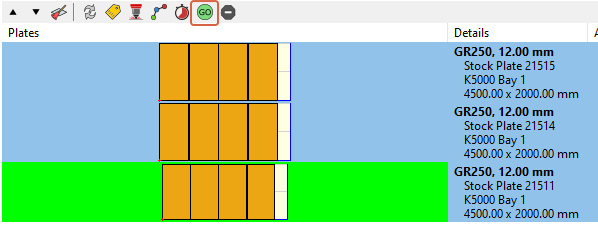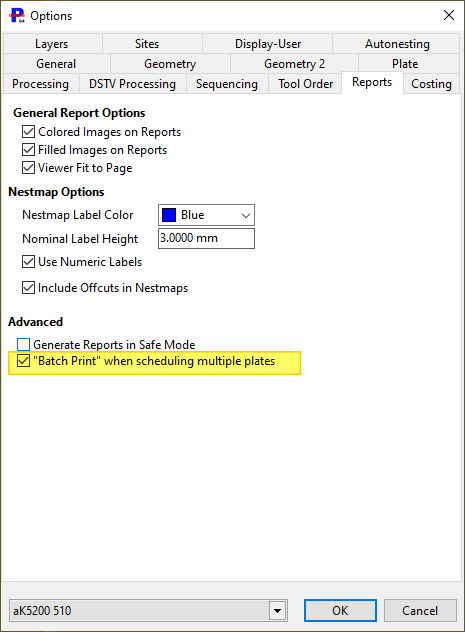From the Nest Explorer you can select multiple plates at once and perform various operations on them including Processing, Part Labeling, Sequence Optimization and Schedule/Unschedule.
Here we consider Scheduling Multiple Plates:

When the schedule button (highlighted above) is pressed a dialog is presented with various options:

If checked, the file save confirmation dialog will be displayed once for each plate, to confirm the location and name of the saved NC file on disk. With Touchcut integration this can usually be left unchecked as the file location does not concern us.
When unchecked the program will save to its automatically generated name and location, or if it has been previously scheduled, to the same name and location it was scheduled to last time. Sometimes you may get errors when rescheduling a plate that was scheduled previously on a different computer to a network or removable disk location that is not available on the computer; checking this box will avoid this error, allowing us to save instead to a location that we can access.
If checked you can specify the size of the unnested drops in the plate to keep as remnants.
If checked, a job report will be printed for each plate. Normally a print dialog will appear for each plate, however if Batch Print is checked in the User Options (Alt-U) on the Reports tab, then it will only be shown on the first plate so long as all the subreports have the same printer assigned. If the Job Report contains multiple subreports referencing different printers, then the Print dialog will still appear for each plate.

Use Machine Defaults for Prepare and Remove Time
If unchecked, you can override the machine defaults for load and unload times, for example if the plates are particularly heavy you may wish to increase the load and unload times.